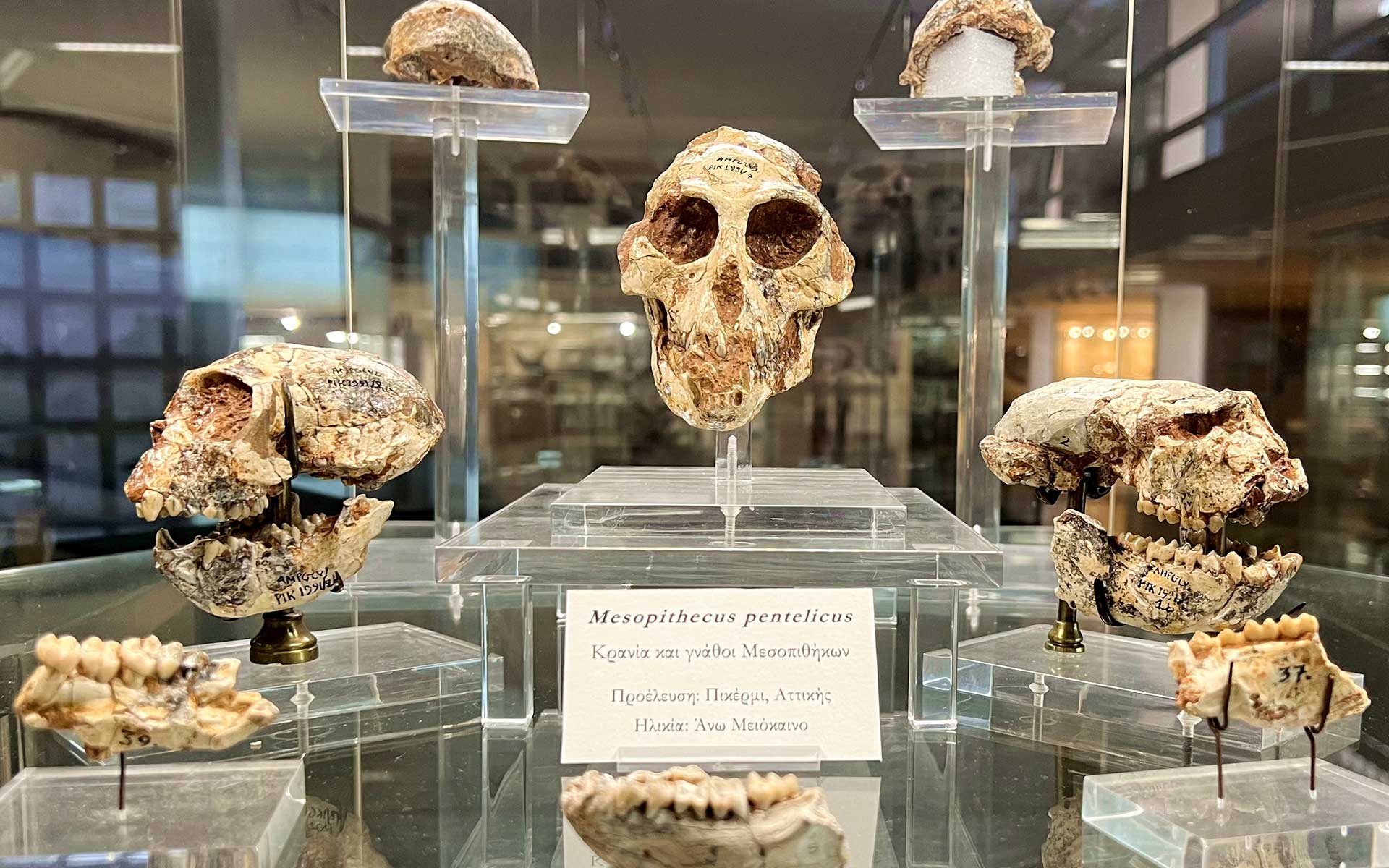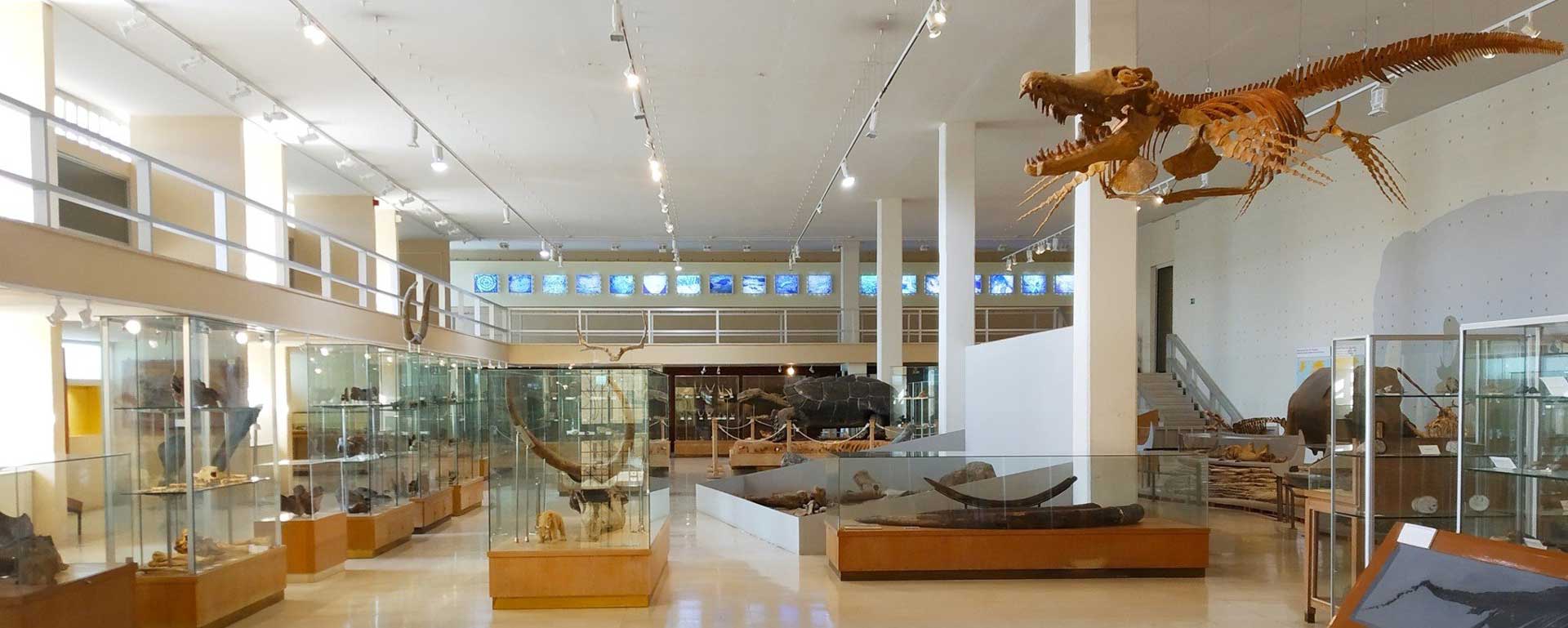The Pikermian collection of the Athens Museum of Paleontology and Geology
Greece

Rare fossils of Mesopithecus pentelicus from the Pikermian collection of the Museum of Paleontology and Geology of the National and Kapodistrian University of Athens.
Housing institution
Museum of Paleontology and Geology | National and Kapodistrian
Location
University of Athens
Panepistimiopolis, GR-157 84 Athens
37.96641°Ν, 23.78515°Ε
Homepage
Rare fossils of Mesopithecus pentelicus from the Pikermian collection of the Museum of Paleontology and Geology of the National and Kapodistrian University of Athens.
A specimen rich and taxonomically diverse collection of fossil vertebrates, which serves as a reference for contemporary Eurasian fossil faunas.
- Geo-collection description
The collection includes fossil material of Late Miocene (ca. 7.2 million years old) vertebrates from the classical paleontological locality of Pikermi, 20 km east of Athens. Pikermi was discovered in 1836, being one of the oldest localities in the history of vertebrate paleontology. The Pikermian collection in Athens started as a collection of the Physiographic Society of Athens, which later became part of the National and Kapodistrian University of Athens and was succeeded by the university museums of “Natural History” and “Paleontology and Geology”. Numerous excavations during the last 190 years gradually enriched the collection [refs 1, 5]. Most notable in terms of material richness were those of Gaudry in 1855–1860, and Woodward and Skouphos in 1901 [refs 1, 5]. Currently, the Athens collection includes tenths of thousands of fossils that belong to 60 species. The collection is of great scientific value, due to its richness and taxonomic diversity [refs 2–4], but it is also used as a valuable teaching material for the educational purposes of the University of Athens.
- Geo-collection value
Due to its early discovery in 1836, the Pikermian collection is pivotal in the development of vertebrate paleontology. The taxonomic diversity found in its fossils established Pikermi as a key reference for Late Miocene vertebrates in Eurasia, supported by over 5,260 GoogleScholar results and references in 1,293 Scopus database documents. As the type locality for numerous genera and species, first described at Pikermi, the Museum of Paleontology and Geology in Athens University houses significant specimens, solidifying its status as a leading global Pikermian collection. From rare finds like Mesopithecus skulls to abundant Hipparion postcranial elements, the Athens collection offers exceptional comparative statistical samples, emphasizing its immense scientific value.
The collection is open to a diverse audience, including students, scientists, and the public, accessible through exhibitions and virtual formats. It serves educational purposes, offering teaching opportunities through tours and lectures. Data and images are integrated into DISSCO, cataloged electronically, and will soon be freely accessible online. The Advanced Tour and Education Services project at the virtual Paleontology and Geology Museum, initiated two years ago, is set for public release in June. It includes a virtual tour guided by a 360-degree-view virtual agent, emphasizing the Pikermian fauna collection, excavations, and history.
- Reference
- ROUSSIAKIS S., FILIS P., SKLAVOUNOU S., GIAOURTSAKIS I., KARGOPOULOS N., THEODOROU G. (2019): Pikermi: a classical European fossil mammal geotope in the spotlight. European Geologist, 48: 28–32.
- ERONEN J.T., MIRZAIE ATAABADI M., MICHEELS A., KARME A., BERNOR R.L., FORTELIUS M. (2009): Distribution history and climatic controls of the Late Miocene Pikermian chronofauna. Proceedings of the National Academy of Sciences of the United States of America, 106 (29): 11867–11871.
- KOSTOPOULOS D. (2009): The Pikermian Event: Temporal and spatial resolution of the Turolian large mammal fauna in SE Europe. Palaeogeography, Palaeoclimatology, Palaeoecology, 274 (1–2): 82–95.
- BERNOR R.L., SOLOUNIAS N., SWISHER C.C., III, VAN COUVERING J.A. (1996): The correlation of the three classical “Pikermian” mammal faunas —Maragheh, Samos and Pikermi— with the European MN Unit system. In BERNOR R.L., FAHLBUSCH V., MITTMANN H.W., Eds.: The evolution of Western Eurasian Neogene Mammal faunas: 137–154. Columbia University Press. New York.
- GAUDRY A. (1862–1867): Animaux fossiles et géologie de l’Attique. E. Savy. Paris. [This is the first dedicated monograph on Pikermian fossils, based on the results of Gaudry’s expedition at Pikermi, and published in a series of fascicles. The author described 35 mammalian species, plus avian, reptilian and molluscan material, many of which were new to science. This monumental work is richly illustrated and still serves as a reference for the study of Late Miocene faunas.]

